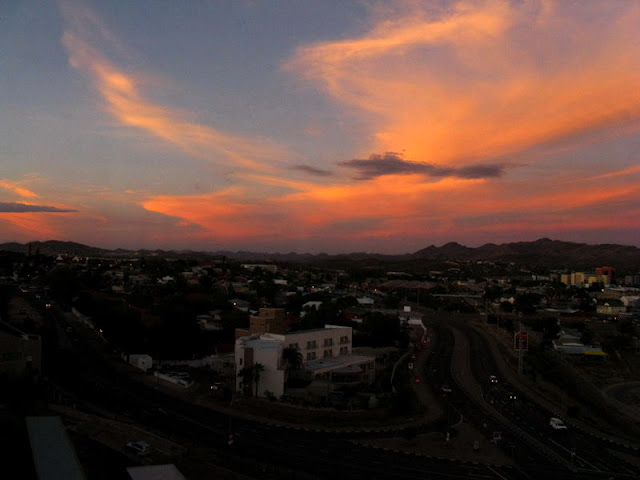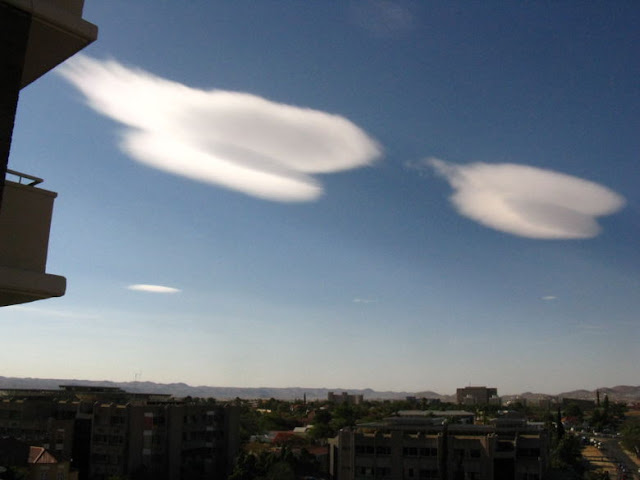The rains were beginning in earnest at the start of our mid-November trip to Etosha. A couple of days before however, it was very clear and we saw this beautiful display of the earth’s shadow just before sunrise.
This gorgeous array was directly overhead about noon on our drive to Etosha.
The skies at Etosha clouded up each day and dazzling shafts of sunlight came streaming through holes in the clouds.
Once we were back from Etosha, there were a progression of stormy days and beautiful skies to accompany them. The thunderstorms here are like the ones in New Mexico. They gather enough mass to rain and once they’re over the skies clear, usually in time for a breathtaking sunset.
On November 21, clouds dissipated before they could form thunderstorms, but they were in the northern skies after sunset and put on this gorgeous display.
Then on November 23, there was the best sunset display yet. The rains were over and this is how it looked as the sun crashed into the horizon.
Here is the progression of changes in the sky in the half hour or so after sunset. I really wish you all could have been here to see it for yourselves.
Later, just as I was heading to bed, this was the view of the gorgeous night that followed that amazing sunset.
Three days later, another storm was ending just at sunset, this time turning the clouds the color of orange juice.
Tonight, yet another late afternoon storm passed over Windhoek. This was the scene to the east shortly after sunset. This is not an HDR photo. It really looked like this!
My camera and I are having the time of our lives.





































